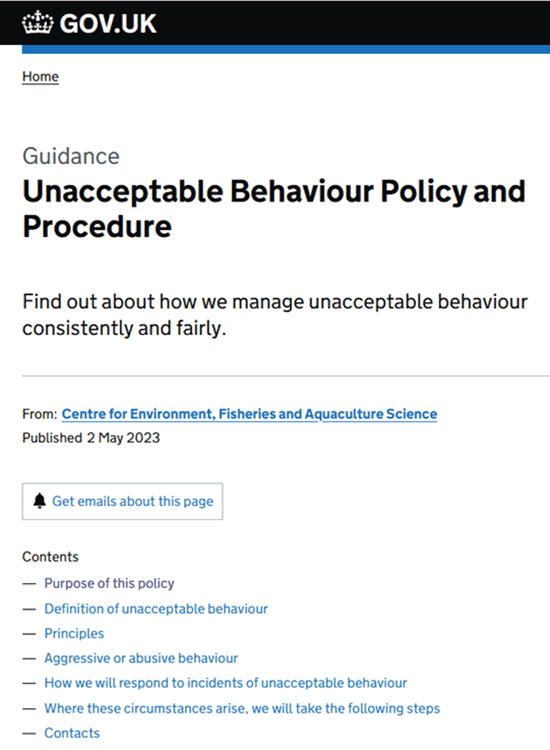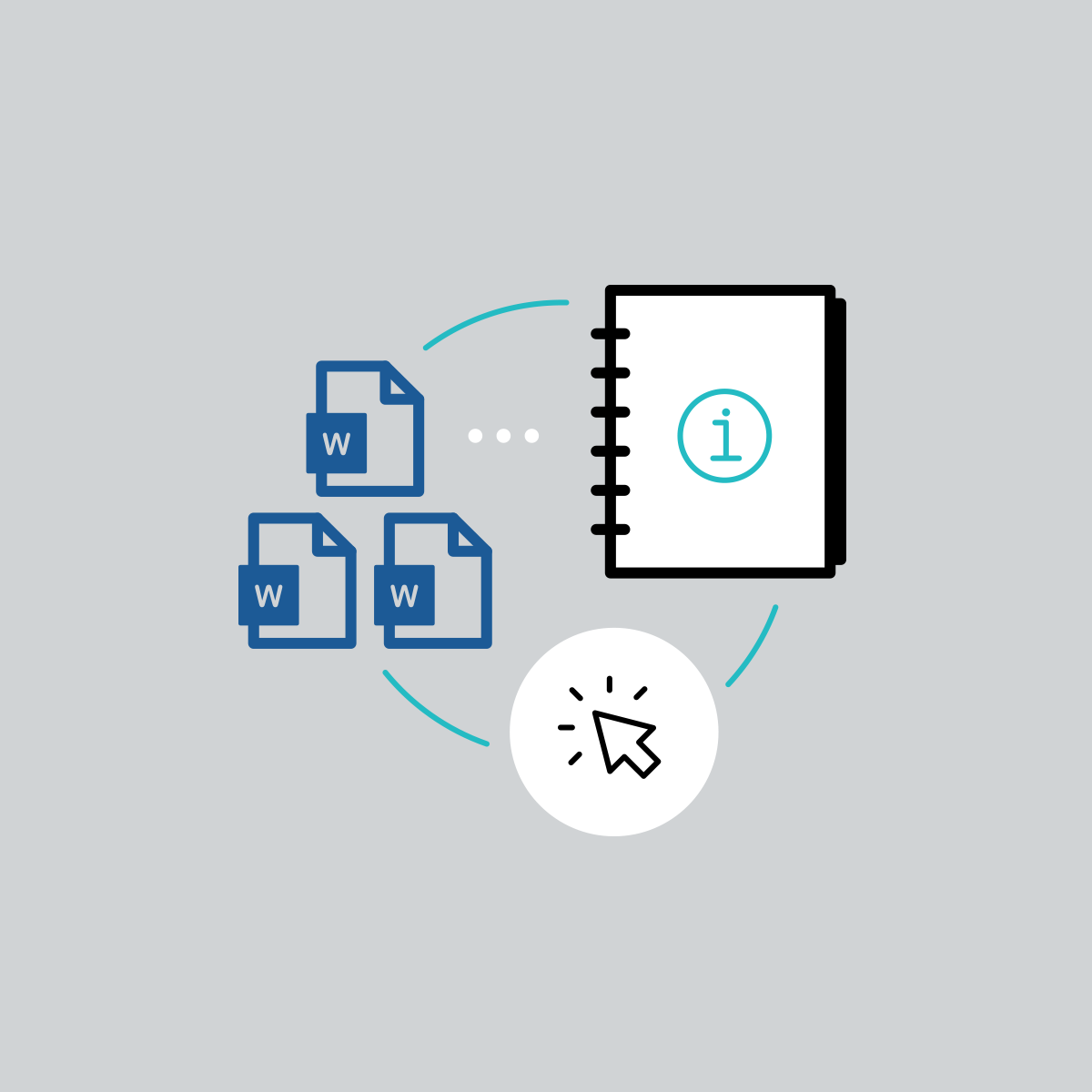This guest post was written by Ginny Critcher, who has over twenty years' experience in writing policies and procedures and many years' experience in using MadCap Flare. Ginny is a director at Cherryleaf , a technical writing and procedures writing services company based in the United Kingdom.
Policies and procedures play a crucial role in every organization, big or small. Well-written policy documents provide structure, consistency, and clarity as to how things should be done. Good ones help you navigate the sometimes-confusing terrain of your work environment.
In this article, we'll delve into the essential components of effective policies and procedures, look at making them engaging and reader-friendly, and share some practical tips to help you navigate potential pitfalls along the way. We'll show you how to structure your policies and make them valuable assets for your organization.
What’s the difference between policies and procedures?
Policies and procedures are guidelines and rules established by organizations to govern their operations, ensure consistency, and promote compliance with legal and regulatory requirements. While policies set out the principles and objectives of an organization, procedures outline specific steps and actions to be followed in various situations.
Policies
Policies are like the broad strokes on a canvas, painting the big picture of what your company stands for and how it operates – the north star guiding your organization’s ship. They set the tone, the goals, and the overarching principles that guide decision-making. From your code of conduct to your environmental sustainability initiatives, policies make it clear what an organization stands for. They outline the goals, objectives, and expected behavior within the organization.
Policies are typically developed by management and are meant to provide a framework for consistent and effective operations.
Examples of policies include:
- Codes of Conduct
- Information Security Policies
- Data Privacy Policies
- Diversity and Inclusion Documentation
- Equal Opportunity Policies
- Health and Safety Policies
- Sexual Harassment Policies
- Dress Codes
- Environmental Sustainability Policies
- Remote Work Policies
- Social Media Use Policies
Procedures
Procedures are detailed step-by-step instructions that specify how tasks or activities should be performed to achieve desired outcomes – the GPS that helps you navigate through the twists and turns of your daily operations. They provide you with clear, step-by-step instructions on how to get things done. Procedures tell you who does what, what resources you need, and how to handle any unexpected detours along the way.
Examples of procedures include:
- Job Descriptions
- Employee Onboarding Procedures
- Purchasing Procedures
- IT Support Documentation
- Job Descriptions
- Evacuation and Emergency Procedures
- Customer Complaint Handling Procedures
- Remote Work Setup Tasks
- Incident Reporting Procedures
- Performance Evaluation Procedures
- Project Management Instructions
Why do we need them?
Imagine a workplace where everyone does their own thing without consistency or structure. Chaos would follow. Policies and procedures bring order to the chaos, providing a common framework for everyone to follow. They play a crucial role in organizations by providing structure, consistency, and accountability.
They help ensure that employees understand their roles and responsibilities, mitigate risks, and facilitate efficient and effective operations. Regularly reviewing and updating policies and procedures is essential in adapting to changing circumstances, industry standards, and best practices.
Policies and procedures also foster a sense of accountability. They make it crystal clear who's responsible for what, leaving no room for finger-pointing or confusion. When everyone knows what's expected of them, they can perform their duties with confidence and efficiency.
Let's not forget the compliance aspect. Policies and procedures help ensure your organization stays on the right side of the law. They keep you in line with industry standards, protect your reputation, and minimize the risk of legal headaches. Plus, they demonstrate to clients and stakeholders that you take your corporate responsibilities seriously.
What makes a good policy?
All the usual best practices of technical writing should be applied to policy and procedure writing: know your audience, write clearly and concisely, and use plain English. In addition, ensure you are echoing your organization’s core values in your content.
Clear Expectations and Responsibilities
Define clear expectations and responsibilities within the policy. This helps those who are expected to abide by the policy understand what is expected of them and who to contact for more information or support.
Using headings
Within each section of your policy document, use subsections and headings to further break down the content into smaller, more manageable parts. This helps readers navigate the document and locate specific information easily. Use descriptive headings that accurately represent the content of each section.
Writing in plain English
Use clear, concise, and jargon-free language to ensure the policy is easily understood by all employees. Avoid overly technical terms or acronyms that may be unfamiliar to the general audience. If technical terms are necessary, provide clear definitions or a glossary.
And, of course, use consistent formatting throughout the document.
Ensure Legal Compliance
Policies must comply with relevant laws and regulations. Consult legal advice if necessary to ensure that your policy meets legal requirements and industry standards. This is particularly important for policies related to equal opportunity, privacy, and safety.
Regular Review and Update
Policies should be regularly reviewed and updated to reflect changes in the organization, industry standards, or legal requirements. This ensures that the policies remain relevant and effective.
An Example of a Policy
Let’s look at an example of a well-structured and clearly written policy and see why it works. This example is from the UK government’s website, www. gov.uk:

Writing a table of contents
The table of contents at the top of the page has clear, descriptive headings and is short. The user can easily find the section they need (generally, people don’t read the whole policy document, they look for the bit that relates to what their particular requirement is in a specific scenario). Splitting the policy into smaller sections makes this easier for the user.
Having the appropriate layout
In this example, the layout is uncluttered, and the use of the black color in the main heading gives a sense of seriousness and importance which you would expect since its goal is to provide information about government services to the UK public. The short description below the main heading explains concisely what information is in the policy.
Stating the purpose of the policy
At the beginning of the policy, the purpose is clearly defined:
Purpose of this policy
This policy means we can manage unacceptable customer behavior consistently and fairly. It sets out clearly what we consider to be unacceptable and the steps we may take to deal with such behavior. It applies to everyone who accesses our services.
The Equality Act 2010 protects individuals against discrimination, harassment, and victimization. We meet the requirements of the Act through the following principles:
The language used is unambiguous, and the purpose of the policy is outlined in the first sentence. A reference to compliance with a particular legal framework is also mentioned.
Providing definitions
Definitions are crucial to employees’ understanding of what an organization means/expects/desires from not only employees but the wider public. In our example, a definition of unacceptable behavior is clearly explained:
Definition of unacceptable behavior
Unacceptable behavior means acting in a way that is unreasonable, regardless of the level of someone’s stress, frustration, or anger. It may involve acts, words or physical gestures that could cause another person distress or discomfort.
Using examples
The definition continues with a more in-depth description of aggressive or abusive behavior and provides examples:
Aggressive or abusive behavior
This is behavior or language (written or spoken) that could cause our staff to feel afraid, threatened or abused. This includes threatening emails, telephone calls, meetings, and comments on social media or elsewhere.
For example:
- insulting or degrading language, including inappropriate humor, innuendo, or malicious allegations of any form of physical violence or threats of physical violence
- derogatory, racist, sexist, ageist, or homophobic remarks
- comments relating to disability, perceived gender, religion, belief, or any other personal characteristics
Providing examples is helpful to your readers as they help them imagine a scenario where they may need to follow a particular procedure or refer to company policy in a certain situation.
Dealing with incidents
The policy concludes with a section on how incidents will be dealt with and clearly states what steps the organization, in our example, the Centre for Environment, Fisheries and Aquaculture Science (Cefas), will take to manage abusive or aggressive behavior.

Structuring a policy document
When structuring the content within a company policy document, it's important to create a clear and organized structure that makes the information easily accessible and understandable for employees.
Here are some tips to help structure a policy effectively:
- Make sure you include a table of contents either at the beginning of a document if you are using e.g., MS Word, or if you are using a Help authoring tool, such as Madcap Flare or MadCap IXIA CCMS, making good use of the inbuilt Toc generation features.
- Provide a brief introduction explaining the policy document's purpose and scope. Clearly state whom the policy applies and why it is important for the organization.
- Present each policy statement in a separate section. Begin with a clear and concise policy statement outlining the policy's objectives and principles. This section should provide a high-level overview of what the policy covers and why it is necessary.
- Divide the policy content into logical sections, with each section addressing a specific topic or area of concern. This may include sections on topics such as employee conduct, information security, health and safety, anti-discrimination, data protection, etc.
- Add any cross-referencing/links at the end of the topic to help employees find relevant information and ensure consistency across different policy documents. Add any supporting documents here too, as appendices/attachments/hyperlinks.
- Include a section at the end of the document outlining the policy's review and approval process. Specify who is responsible for reviewing and updating the policy and how often this should be done so the policy details remain current.
Ideally, involve relevant stakeholders, such as legal, HR, and management, in creating and reviewing the policy document. Their input and expertise can help ensure that the policy aligns with legal requirements and best practices within your industry.
Conclusion
Well-crafted policy and procedure templates are important. They are valuable tools for improving communication, reducing ambiguity, and mitigating risks.
We could say a lot more (indeed we provide a day-long course on this topic), but if you follow these tips, you should be able to create informative, usable, and effective policies and procedures.











